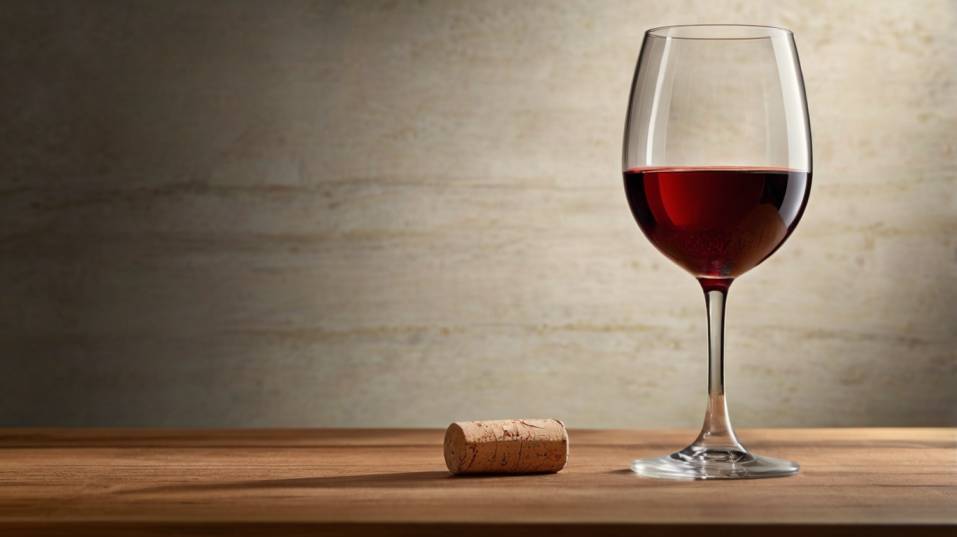What to Do If a Wine Smells Off
Unsure what to do when a wine smells wrong? Learn how to spot flaws, trust your palate, and taste with confidence—no guesswork needed.

Ever opened a bottle of wine and thought, wait… is this right? That first whiff can thrill—or confuse. If something smells musty, sharp, or just “off,” don’t panic.
These moments aren’t just about spotting bad bottles—they’re a powerful way to build your nose and boost your tasting confidence.
Knowing what to do when a wine smells wrong helps you trust your instincts, avoid waste, and get more out of every glass. Let’s break it down.
Start With the Glass
Before you fault the wine, check the basics. A wine glass that’s been sitting too long on a shelf or washed with scented detergent can create aromas that have nothing to do with the wine itself.
Dust, cardboard, or lingering soap can mask or distort delicate aromas, especially in more subtle wines like Pinot Noir or dry Riesling.
Rinse the glass with warm (not hot) water. Better yet, if you have the same wine already in your glass, pour a small splash into a clean glass and compare.
You’ll immediately get clarity: if the odd smell is gone, it was the glass, not the wine. This simple habit—checking the glass—saves you from misjudging a perfectly good bottle.
Engage Your Nose, Not Your Imagination
Tasting starts with smelling. But if a wine smells “weird,” resist the urge to overanalyze it right away. Focus on identifying whether the smell feels alive or lifeless, clean or flawed. Most wine faults have very specific, recognizable aromas:

Cork taint (TCA)
Damp cardboard, wet basement, moldy newsprint. This isn’t a subtle flaw—it smothers fruit and freshness. Cork taint can affect 1–3% of bottles sealed with natural cork.
Volatile acidity (VA)
Smells like vinegar, nail polish remover, or sometimes balsamic. A small amount is normal in some styles, especially natural or oxidative wines, but if it dominates, it’s a problem.
Oxidation
Think bruised apple, stale nuts, or sherry (when that’s not intentional). White wines turn darker gold or brown; reds can lose their vibrancy. It usually means the wine has been exposed to too much oxygen, either in the bottle or in storage.
Reduction
Burnt rubber, cabbage, or struck match. This often blows off with some air—so wait before judging.
Heat damage
Stewed or cooked fruit, pruney or jammy notes that don’t match the wine’s style. Texture might feel flabby, with faded acidity and structure. This happens when a wine is exposed to high temperatures in transport or storage.
Tuning into these smells builds your sensory vocabulary—and helps you distinguish between a wine that’s genuinely flawed and one that’s just unfamiliar.
Swirl, Wait, Reassess
Not all off aromas are fatal. Some wines—especially younger, tightly structured ones—start out muted or slightly funky. Swirling introduces oxygen, which helps volatile aromatics open up.
Pour a small glass, give it a swirl, and wait two or three minutes. Then revisit. If the fruit starts to show up, if the nose becomes clearer or more layered, that’s a good sign.
Reduction, for example, often resolves with air. But cork taint won’t. If a wine smells moldy or flat after a few minutes, it’s not going to improve. The key is to be patient, not passive. Swirl. Wait. Observe. Then decide.
Know When It’s a Flaw, Not a Style
One of the most confusing parts of learning about wine is telling the difference between a wine that’s faulty and one that’s just stylistically different from what you expected.
Some wines are intentionally funky, earthy, or unfiltered. This is especially true in natural wine circles. You might get aromas of yeast, barnyard, or dried herbs. These aren’t necessarily flaws—they’re part of the winemaker’s intent.
But if you’re getting mold, vinegar, or an aroma that overwhelms everything else—and especially if there’s no balance on the palate—trust your instincts. A flaw isn't just about smell; it’s about a wine being out of harmony, out of shape.
You don’t need to know all the science to make the right call. You just need to notice how the wine makes you feel: intrigued or disappointed, curious or repelled.
Don’t Be Afraid to Speak Up
If you’re at a restaurant or wine bar and something smells off, it’s absolutely fair to say so. You don’t have to use technical language.
You can simply say, “This smells a little off—can we check if it’s corked?” Good hospitality will meet you where you are.
The same goes for retail. If you open a bottle at home and find it flawed, especially due to cork taint or oxidation, most reputable shops will offer a replacement or credit—if you bring the bottle back with a polite explanation.
Keep the cork, and don’t pour out the wine. Being able to return a wine isn’t about being fussy—it’s about valuing the experience you were promised.
Learn From the Off Bottles
Every bottle, even a flawed one, teaches you something. If you’ve never smelled cork taint before, write it down. If you catch a touch of VA in one wine but not another, compare how it affects the fruit.
This kind of sensory calibration is how your tasting confidence builds over time—not from chasing expensive bottles or memorizing facts.
Even opening a disappointing wine can sharpen your senses. You notice more. You taste more precisely. You remember what balance should feel like.
So don’t rush to pour it down the drain. Sit with it for a moment. Learn what you can. Then move on.
How to Avoid the Problem in the First Place
While you can’t eliminate all risk, you can stack the odds in your favor:
Buy from trusted sources
Look for retailers who store bottles properly and know their stock. If a bottle’s been sitting in a sunny window, skip it.
Be mindful of transport
Wine is sensitive to heat and motion. Try not to leave it in a hot car or carry it around all day before opening. If you order online, choose stores that use temperature-controlled shipping in warm months.
Store it well
At home, keep bottles out of direct light and away from heat sources. A cool cabinet or wine fridge is ideal. Even a dark closet is better than above the fridge.
These simple steps help protect the wine’s integrity—and make sure what’s in the glass reflects the winemaker’s intent.
Final Thoughts
When a wine smells off, it’s not just a disappointment—it’s an opportunity. To trust your senses. To learn something new. To sharpen your judgment and deepen your confidence.
The more wines you smell and taste, the more natural this becomes. And the better your instincts get, the more rewarding each bottle will be.
So tonight, swirl your next glass with fresh attention. Notice the nose. Ask questions if something feels wrong. And if you haven’t yet smelled a flawed wine? Try to—on purpose. It’s a crucial step in training your palate.
Drink with curiosity. Learn with purpose. And always, always give the wine a chance to speak.




